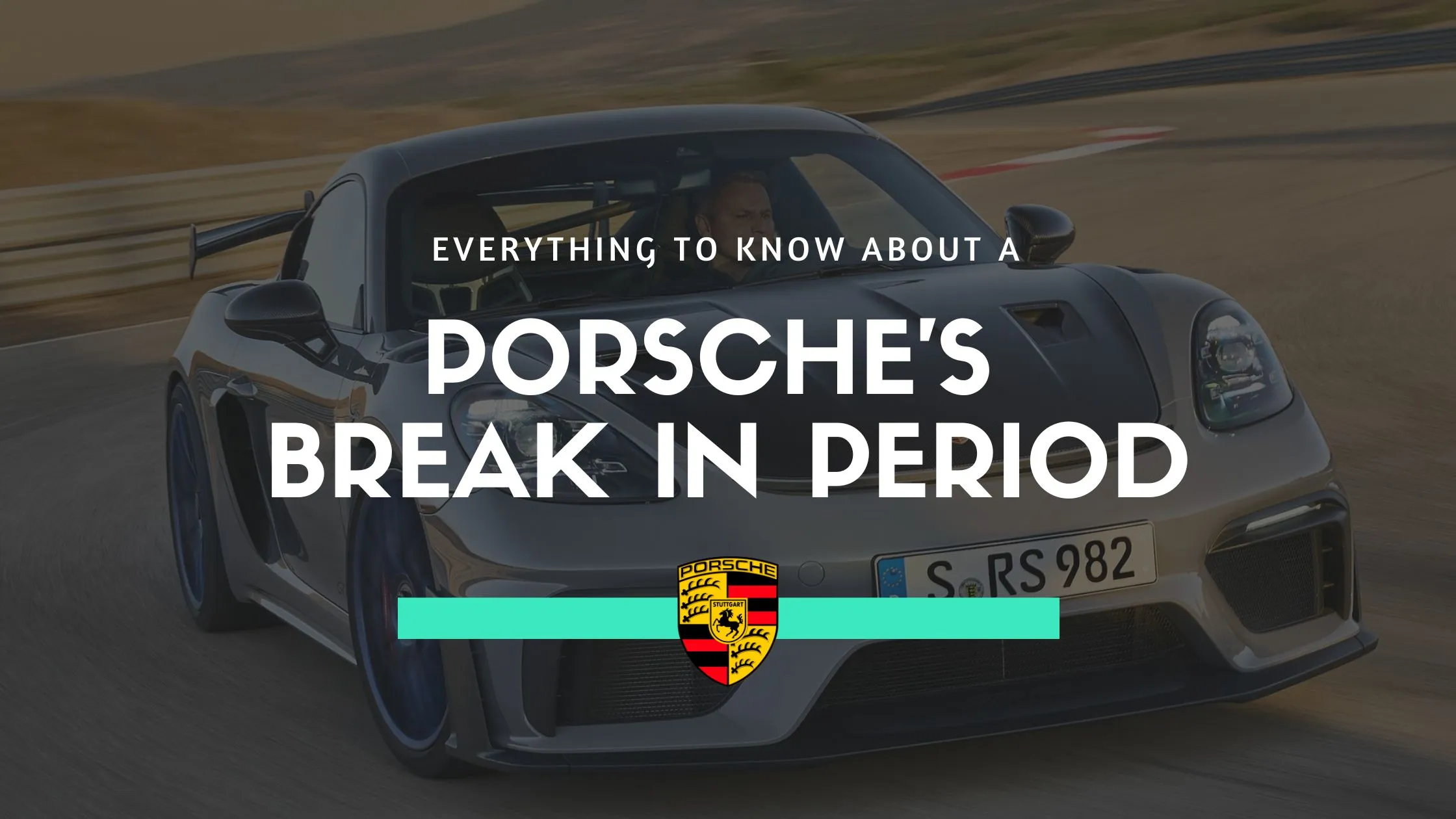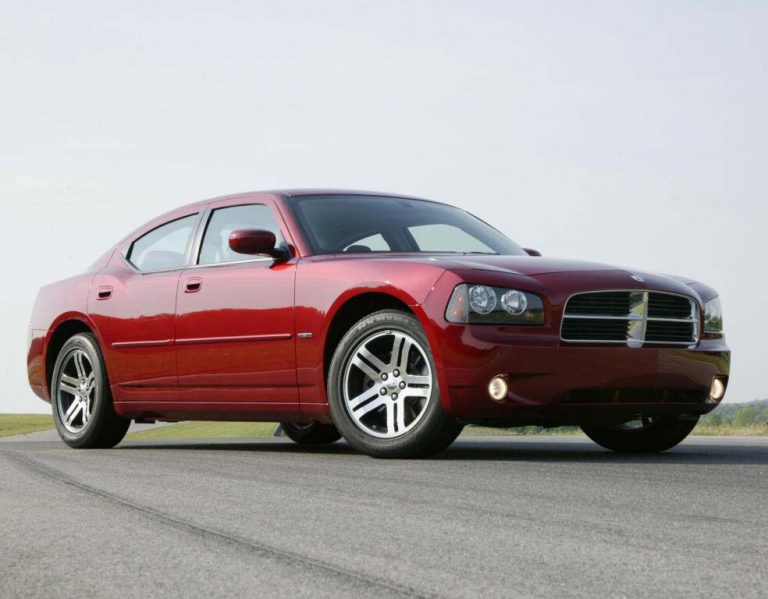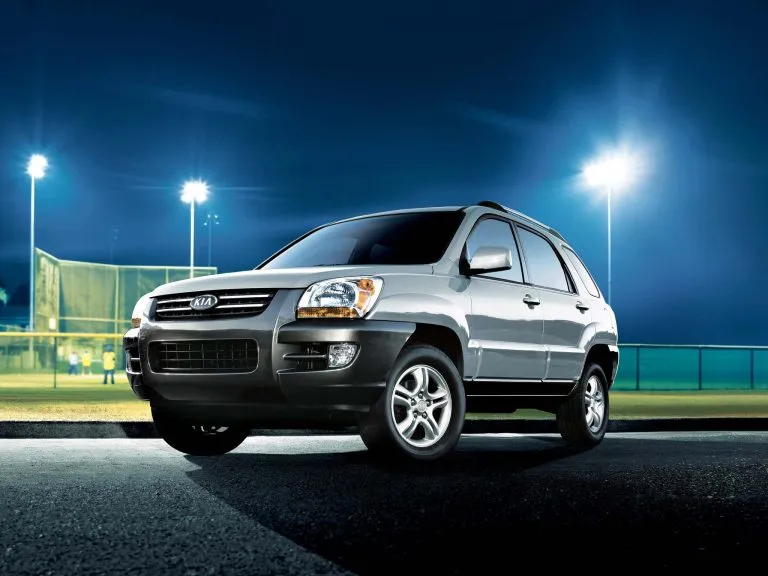The Porsche Break In Period: Is It Important? (Explained)
The recommended break in period always tends to get Porsche owners up in arms. What a way to take all of the fun out of driving your brand-new Porsche, right? If you aren’t sure what a break in period is exactly, don’t worry, we’ve got your back.
This blog post will cover what a Porsche break in period is, why it matters, what it normally constitutes, whether it varies from car to car, and the consequences for those who choose to push their car to its limits just a little too early. Here is everything you need to know about the Porsche break in period.
Highlights
- A Porsche break-in period is a recommended period during which you should drive a new Porsche gently for the first 1,000 miles or so.
- The break-in period allows engine components to settle and work together properly, and not following it could potentially lead to long-term performance issues and void the vehicle’s warranty.
- During the break-in period, avoid aggressive driving, hard accelerations, high-speed driving, and track racing. Keep engine RPMs below a specified limit (around 4,000 to 4,500 RPM) and avoid prolonged idling or short trips.
- The recommended break-in period may vary depending on the Porsche model and engine size.
- Ignoring the recommended break-in period may not necessarily void the warranty if no damage occurs, but it is strongly advised to follow it.
- Most car manufacturers, including Porsche, recommend some form of a break-in period for their new vehicles, with specific guidelines varying by make and model.
- The break-in period duration, such as 1,000 miles, may not be based on a precise calculation but is a general guideline to ensure proper engine break-in.
- Following the break-in period guidelines is recommended for optimal vehicle performance and longevity.
What Is A Porsche Break In Period?
Basically, when you get a brand-new Porsche fresh off the production line, it’s important to treat it gently for the first 1,000 miles or so. This is often called the “break in period”.
During this time, the engine components need to settle in and get used to working together, bits move around, expand, contract, and gradually settle into place.
If you drive too fast or too hard during the break in period, it could potentially cause problems for the engine later on.
So, you want to avoid things like driving really fast or quickly accelerating in low gear too often. Following the break in period recommendations will help your Porsche stay healthy and perform at its best for a long time.
You will often be advised about the recommended break in period for your car by the dealership and/or in your user manual.
Do You Really Need To Respect The Porsche Break In Period?
The key word is “need”. Do you need to, because if you do not, you’ll die? No. But in reality, it’s simply silly not to. It is generally considered important to respect your Porsche’s break in period to ensure the vehicle’s longevity and ongoing optimal performance.
During the break in period, the engine components need time to settle in, and driving the car too aggressively during this period could lead to long-term performance issues such as reduced torque and substantially reduced top speeds and reliability at speed.
Porsche specifies a break in period in their owner’s manual, and failure to follow these guidelines probably won’t void the vehicle’s warranty but they can see how you’ve been driving the car on their Porsche system.
What Normally Makes Up The Porsche Break In Period?
The Porsche break in period typically involves driving the car gently for the first 1,000 miles or so. While it occasionally varies, requiring more or fewer miles before the break in period is concluded is not generally the case.
If in doubt, you can use 1,000 miles as a benchmark. During this period, avoiding aggressive driving, hard accelerations, and high-speed driving is recommended.
Absolutely NO track racing. It is completely out of the question for at least 1,000 miles. Porsche also often recommends keeping the engine RPMs below a certain limit, typically around 4,000 to 4,500 RPM, to give the engine chance to break in.
Are All Porsche Break In Periods The Same?
No, they certainly aren’t all the same, though most cars do have one. First, you need to honestly consider the car you are driving and what kind of engine it is.
Will a Porsche Taycan need thousands of miles to break in? No. Probably not.
However, would your new Macan benefit from a thousand-mile-grace period before you really let it rip? You bet! But this is where things get interesting.
I recently purchased a 2023 718 Spyder and just before I left the dealership, I asked “so what’s the break in period?” and they simply said, “there isn’t one, I want to hear it as you give it some up the street!”. So it definitely varies.
I think this is probably the attitude they have towards cars with GT engines, but probably not for their more standard cars.
Does Ignoring The Porsche Break In Period Void Warranty?
Here is where things get tricky. You actually don’t void your warranty simply by pushing your car beyond its limits. They actually can tell whether you have because your onboard computer records all such information.
But, so long as you don’t actually do any damage, there is an argument for ignoring the break in period having had no effect.
That being said, this all comes back to the difference between “should” and “can”. Should you ignore the break in period because it doesn’t necessarily void the warranty? You certainly could, but you absolutely shouldn’t as it could do damage later on in the cars life.
Do All Cars Have A Recommended Break In Period?
Yes, most car manufacturers recommend some kind of break in period for their new vehicles. The specific break in period guidelines will almost certainly vary depending on the make and model of the car. Still, generally, it involves driving the car gently for the first few hundred or thousand miles.
The biggest difference between break in periods will likely be the size and power of the engine. The bigger and more powerful the engine, the longer its break in period will likely be.
It is always best to consult your owner’s manual if you are unsure. Or, simply ask the dealership for their advice on whether you are driving a Porsche or anything else.
Calculating A Recommended Break In Period
The clear issue with a break in period that is such a nice, round number like 1000 is that it’s very obviously not based entirely on a precise calculation.
Especially considering that many cars of varying style, design, and engine size might have identical break in periods.
So, is 1000 miles an arbitrary number? Yeah, kind of. In actual fact, you can probably get away with just a few hundred miles before your engine is fully broken in.
But it’s best to err on the side of caution, isn’t it, so you still want to stick to the break in period recommendation.
Our Verdict On The Porsche Break In Period
So, now you know exactly what a Porsche break in period is and why it matters. If you have never had, or have no desire to ever have, a brand new Porsche, then it doesn’t matter to you all that much.
Unless you are buying a second-hand Porsche that only has a hundred or so miles on the clock, which is getting too common with people reselling cars these days.
If you are thinking of buying a new Porsche, we really can’t recommend following the break in period guidelines highly enough. It is undoubtedly the right move.




